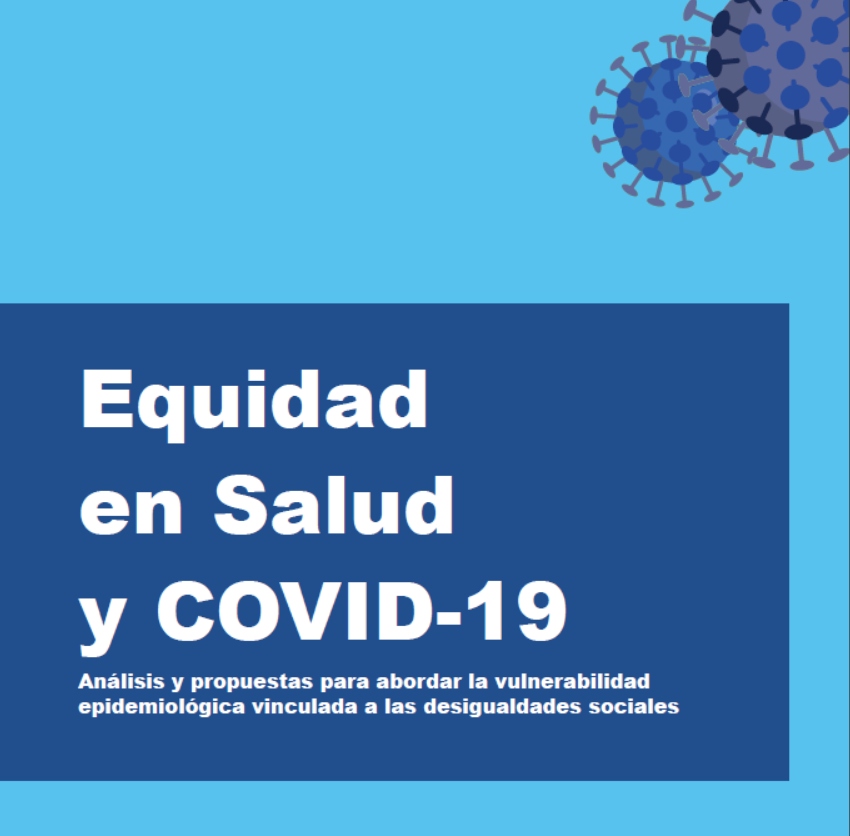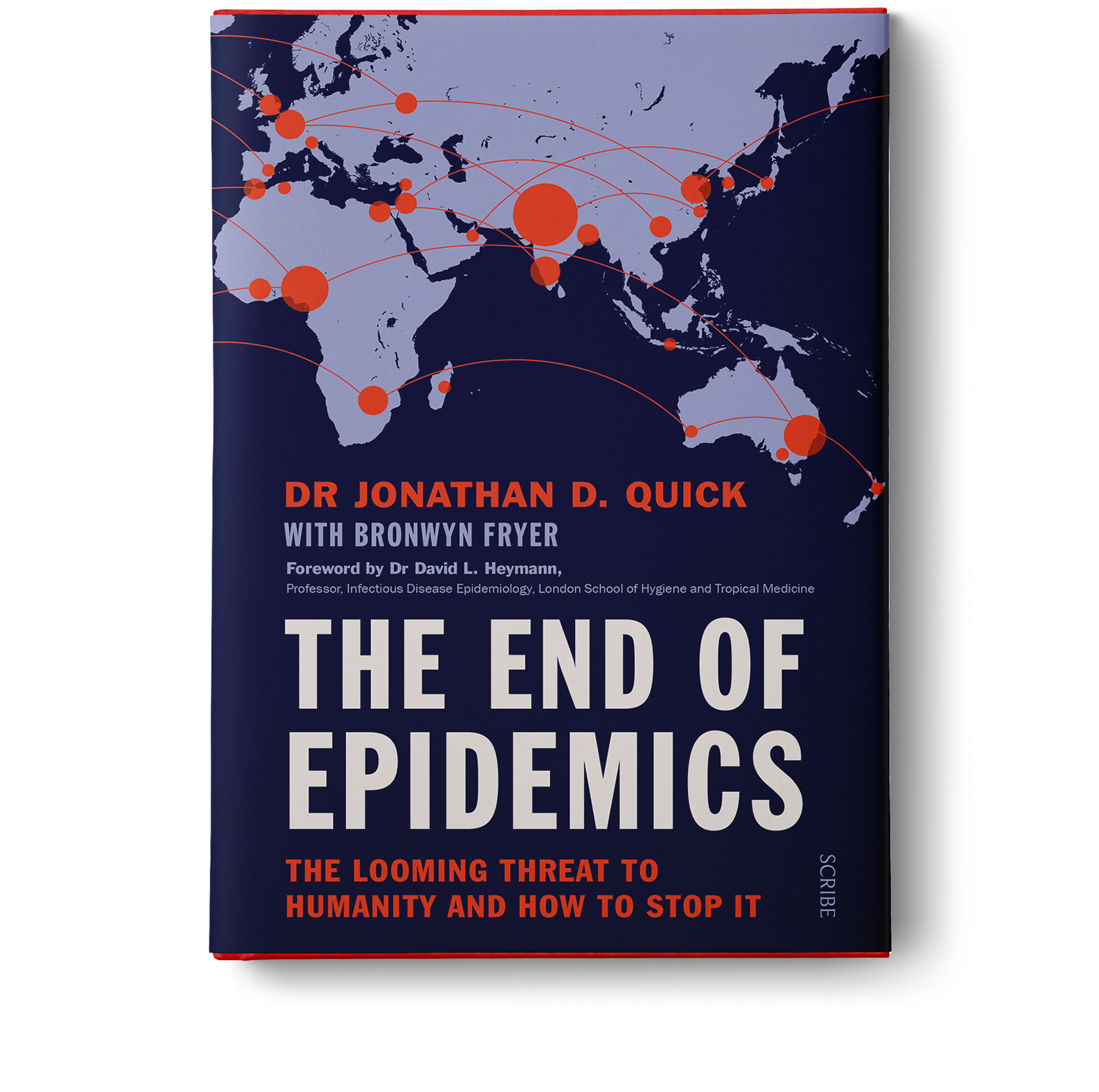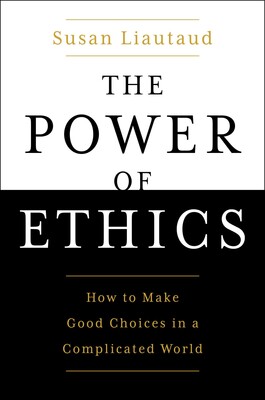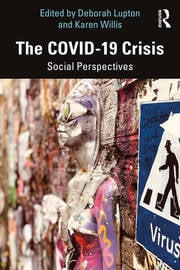El informe, que es un resumen del documento Equidad en Salud y COVID-19. Análisis y propuestas para abordar la vulnerabilidad epidemiológica vinculada a las desigualdades sociales, identifica tres tipos de vulnerabilidad, que están interrelacionados: vulnerabilidad clínica, vulnerabilidad social y vulnerabilidad epidemiológica.
- La vulnerabilidad clínica está influida por características individuales (edad, problemas de salud crónicos, etc.) que conlleva una peor evolución de COVID-19.
- La vulnerabilidad social se relaciona con la inseguridad y la indefensión que experimentan algunas comunidades y familias en sus condiciones de vida y con su capacidad para manejar recursos y para movilizar estrategias de afrontamiento. La pandemia ha puesto de manifiesto el peso de los determinantes sociales de la salud, es decir, de las circunstancias en que las personas nacen, crecen, viven, trabajan y envejecen, incluido el sistema de salud.
- La vulnerabilidad epidemiológica es el mayor riesgo por una mayor exposición a la infección, retraso en el diagnóstico e identificación de contactos o mayor dificultad para seguir las medidas de aislamiento o cuarentena.
El documento destaca como determinantes sociales que influyen en la vulnerabilidad epidemiológica en la COVID-19: Empleo, vivienda, situación económica, entornos residenciales, sistema sanitario y socio sanitario, en la provisión de cuidados y, finalmente, por el estigma y discriminación hacia algunas poblaciones por motivos de identidad de género, orientación sexual, origen, clase social, etnia, dependencia a drogas o comorbilidades.
25 d’abril 2021
The impact of social differences in epidemiological vulnerability
24 d’abril 2021
Voluntary health insurance in Europe
Private Health Insurance and the European Union
These are the topics of this new book:
Introduction: The European Union, the Insurance Industry and the Public-Private Mix in Healthcare
Insurance Directives and the Single Market: Towards a Trivialisation of Private Health Insurance?
Solvency II, the European Government of Insurance Industry and Private Health Insurance
The Uncertain and Differentiated Impact of EU Law on National (Private) Health Insurance Regulations
An Increasing Homogenisation of Private Health Insurers Under Solvency II?
Private Health Insurance in Belgium: Marketization Crowded Out?
Europeanized, Marketized but Still Governed by the State? Private Health Insurance in France
Ireland: The Ambiguous Role of the Health Insurance Market
The Dutch Way: Experimenting with Competition in the Healthcare System
In Between the Market and Public Health Insurance: A Place for Occupational Welfare in Europe?
I specially recommend chapter 9 on The Netherlands. Too often I hear misguided claims over the dutch system. This book will help.
23 d’abril 2021
Vaccine equity
From Vaccine Nationalism to Vaccine Equity — Finding a Path Forward
From NEJM:
Vaccinating the world is not only a moral obligation to protect our neighbors, it also serves our self-interest by protecting our security, health, and economy. These goals will not be accomplished by making the world wait for wealthy countries to be vaccinated first. By investing in multilateral partnerships with a sense of shared commitment and employing a global allocation strategy that increases supply and manufacturing, we can meet the urgent challenge of Covid-19, while creating sustainable infrastructures and health systems for the future. Getting the world vaccinated may well be the critical test of our time.
22 d’abril 2021
21 d’abril 2021
20 d’abril 2021
How do we choose to do the right thing?
The Power of Ethics. How to Make Good Choices in a Complicated World
The message
Ethical decision-making tethers us to our humanity. I see ethical decision-making as perhaps the greatest human connector. It binds us in a common optimistic project of benefiting and protecting society and humanity. Of crafting great stories for ourselves and others. Of continuing to probe what it means to be human in a technology-infused world.
But ethics on the edge require using our power and voices, seizing responsibility, taking action, and committing to truth. We all can actively choose ethics, rather than passively let ethics happen (or not). We all can prioritize humans over machines. We all can make decisions reflecting to future generations what we will tolerate for ourselves and demand of our legacy—rather than submitting to whatever trajectory that morally questionable leaders, innovators, and rogue actors define. We all can seek solutions and not just point out where others have fallen short.
The summary,
Four easily recallable steps, and the questions derived from these four words, will keep us focused: principles, information, stakeholders, and consequences.
Question #1: What are my guiding principles?
Who are you, as an individual or an organization? What do you stand for?
Question #2: Do I have the information I need to make this decision?
And what important information lies in the gap between the information you should know and the information you can know?
Question #3: Who or what stakeholders matter to my decision?
Who or what could influence, or be affected by, your decision?
Question #4: What are the potential consequences of my decision in the short, medium, and long term?
Have you considered the immediate and future impact of your decision at the time of the decision?
The book
and a video,
19 d’abril 2021
A better public health after COVID-19
¿ Será mejor la salud pública tras la COVID-19?
A must read op-ed.
La COVID-19 nos ha cuestionado sobre múltiples aspectos relacionados con la toma de decisiones en salud pública, desde la comunicación en salud hasta las bases jurídicas de las medidas de prevención, pasando por la monitorización de las conductas relacionadas con la infección o la aplicación de los modelos epidemiológicos.
18 d’abril 2021
Covid and social perspectives
THE COVID-19 CRISIS. Social Perspectives
In Chapter 13
13 Post-pandemic Routes in the Context of Latin Countries: The Impact of COVID-19 in Italy and Spain by Anna Sendra, Jordi Farré, Alessandro Lovari and Linda Lombi
In terms of health and risk communication, the COVID crisis has emphasised the lack of specific training in crisis and emergency communication of many public sector organisations, including health institutions. This first social media pandemic has been a major challenge for health communicators; individuals often failed in effectively communicating data and numbers to counteract the infodemic and thus reduce the impact of false narratives. With the increasing diversification of social media platforms, ‘individuals’ health […] will be shaped by a multitude of social forces, each of which can mediate different kinds of health contagion processes’ (Zhang and Centola, 2019). Mitigating the spread of fake news seems to involve coordinated efforts between authorities, mass media and digital companies, but it also appears crucial to invest in education and digital literacy for developing a critical awareness of the use of digital technologies that could be useful for facing future health crises. In other words, the strengthening of comprehensive population-centred responses lies on finding answers concerning how the mechanisms of public concern will operate to engage in coherent protection rules or in what ways the forms of interaction will change
Outline of the book:
PART I: INTRODUCTION
1 COVID Society: Introduction to the Book
Deborah Lupton and Karen Willis
2. Contextualising COVID-19: Sociocultural Perspectives on Contagion
Deborah Lupton
PART II: SPACE, THE BODY AND MOBILITIES
3. Moving Target, Moving Parts: The Multiple Mobilities of the COVID-19 Pandemic
Nicola Burns, Luca Follis, Karolina Follis and Janine Morley
4. Physical Activity and Bodily Boundaries in Times of Pandemic
Holly Thorpe, Julie Brice and Marianne Clark
5. City Flows During Pandemics: Zooming in on Windows
Oimpia Mosteanu
6. The Politics of Touch-Based Help for Visually Impaired Persons During the COVID-19 Pandemic: An Autoethnographic Account
Hidi Lourens
PART III: INTIMACIES, SOCIALITIES AND CONNECTIONS
7. #DatingWhileDistancing: Dating Apps as Digital Health Technologies During the COVID-19 Pandemic
David Myles, Stefanie Duguay and Christopher Dietzel
8. ‘Unhome’ Sweet Home: The Construction of New Normalities in Italy During COVID-19
Veronica Moretti and Antonio Maturo
9. Queer and Crip Temporalities During COVID-19: Sexual Practices, Risk and Responsibility
Ryan Thorneycroft and Lucy Nicholas
10. Isol-AID, Art and Wellbeing: Posthuman Community Amid COVID-19
Marissa Willcox, Anna Hickey-Moody and Anne M. Harris
PART IV: HEALTHCARE PRACTICES AND SYSTEMS
11. Strange Times in Ireland: Death and the Meaning of Loss Under COVID-19
Jo Murphy-Lawless
12. Between an Ethics of Care and Scientific Uncertainty: Dilemmas of General Practitioners in Marseille
Romain Lutaud, Jeremy K. Ward, Gaëtan Gentile and Pierre Verger
13 Post-pandemic Routes in the Context of Latin Countries: The Impact of COVID-19 in Italy and Spain
Anna Sendra, Jordi Farré, Alessandro Lovari and Linda Lombi
14. Risky Work: Providing Healthcare in the Age of COVID-19
Karen Willis and Natasha Smallwood
PART V: MARGINALISATION AND DISCRIMINATION
15. The Plight of the Parent-Citizen? Examples of Resisting (Self-)Responsibilisation and Stigmatisation by Dutch Muslim Parents and Organisations During the COVID-19 Crisis
Alex Schenkels, Sakina Loukili and Paul Mutsaers
16. Anti-Asian Racism, Xenophobia and Asian American Health During COVID-19
Aggie J. Yellow Horse
17. Ageism and Risk During the Coronavirus Pandemic
Peta S. Cook, Cassie Curryer, Susan Banks, Barbara Barbosa Neves, Maho Omori, Annetta H. Mallon and Jack Lam
17 d’abril 2021
The world (dis)order after COVID-19
COVID-19 AND WORLD ORDER. THE FUTURE OF CONFLICT, COMPETITION, AND COOPERATION
Part I. Applied History and Future Scenarios
Chapter 1. Ends of Epidemics
Jeremy A. Greene and Dora Vargha
Chapter 2. The World after COVID: A Perspective from History
Margaret MacMillan
Chapter 3. Future Scenarios: "We are all failed states, now"
Philip Bobbitt
Part II. Global Public Health and Mitigation Strategies
Chapter 4. Make Pandemics Lose Their Power
Tom Inglesby
Chapter 5. Origins of the COVID-19 Pandemic and the Path Forward: A Global Public Health Policy Perspective
Lainie Rutkow
Chapter 6. Bioethics in a Post-COVID World: Time for Future-Facing Global Health Ethics
Jeffrey P. Kahn, Anna C. Mastroianni, and Sridhar Venkatapuram
Part III. Transnational Issues: Technology, Climate, and Food
Chapter 7. Global Climate and Energy Policy after the COVID-19 Pandemic: The Tug-of-War between Markets and Politics
Johannes Urpelainen
Chapter 8. No Food Security, No World Order
Jessica Fanzo
Chapter 9. Flat No Longer: Technology in the Post-COVID World
Christine Fox and Thayer Scott
Part IV. The Future of the Global Economy
Chapter 10. Models for a Post-COVID US Foreign Economic Policy
Benn Steil
Chapter 11. Prospects for the United States' Post-COVID-19 Policies: Strengthening the G20 Leaders Process
John Lipsky
Part V. Global Politics and Governance
Chapter 12. When the World Stumbled: COVID-19 and the Failure of the International System
Anne Applebaum
Chapter 13. Public Governance and Global Politics after COVID-19
Henry Farrell and Hahrie Han
Chapter 14. Take It Off-Site: World Order and International Institutions after COVID-19
Janice Gross Stein
Chapter 15. A "Good Enough" World Order: A Gardener's Manual
James B. Steinberg
Part VI. Grand Strategy and American Statecraft
Chapter 16. Maybe It Won't Be So Bad: A Modestly Optimistic Take on COVID and World Order
Hal Brands, Peter Feaver, and William Inboden
Chapter 17. COVID-19's Impact on Great-Power Competition
Thomas Wright
Chapter 18. Building a More Globalized Order
Kori Schake
Chapter 19. Could the Pandemic Reshape World Order, American Security, and National Defense?
Kathleen H. Hicks
Part VII. Sino-American Rivalry
Chapter 20. The United States, China, and the Great Values Game
Elizabeth Economy
Chapter 21. The US-China Relationship after Coronavirus: Clues from History
Graham Allison
Chapter 22. Building a New Technological Relationship and Rivalry: US-China Relations in the Aftermath of COVID
Eric Schmidt
Chapter 23. From COVID War to Cold War: The New Three-Body Problem
Niall Ferguson
16 d’abril 2021
Vaccine diplomacy
PREVENTING THE NEXT PANDEMIC. Vaccine Diplomacy in a Time of Anti-science
Throughout modern history, vaccines have surpassed all other biotechnologies in terms of their impact on global public health. Because of vaccines, smallpox was eradicated, and polio has been driven to near global elimination, while measles deaths have declined more than 90%, and Haemophilus influenzae type b meningitis is now a disease of the past in the United States and elsewhere.
I define one part of vaccine diplomacy as a subset or specific aspect of global health diplomacy in which large-scale vaccine delivery is employed as a humanitarian intervention, often led by one or more of the UN agencies, most notably Gavi, UNICEF, and WHO, or potentially a nongovernmental development organization
Do vaccines really deserve their own designation for a special type of diplomacy? Yes, I believe so, especially when we consider that between the past century and this one vaccines have saved hundreds of millions of lives [2]. In this sense, the technology of vaccines and their widespread delivery represent our most potent counterforce to war and political instability in modern times. Vaccines represent not only life-saving technologies and unparalleled instruments for reducing human suffering, but they also serve as potent vehicles for promoting international peace and prosperity. They are humankind’s single greatest invention.
The greater issue is that in each of these four cases—smallpox, polio, Ebola, and COVID-19—the global health community had to respond to a crisis and scramble to rapidly develop, test, license, and distribute these vaccines. Could we also implement an anticipatory system in which nations prioritize vaccine diplomacy and routinely employ it to improve international relations? The Global Health Security Agenda does not currently emphasize vaccine development, although new organizations like CEPI and start-up innovation funds from the Japanese and South Korean governments represent promising steps toward global vaccine diplomacy. I am an enthusiastic champion of their efforts. However, I also believe that an opportunity exists for a more comprehensive effort to tackle the world’s most prevalent poverty-related neglected diseases while simultaneously expanding international scientific cooperation as a core element.
The answer might be found somewhere in the G20...
15 d’abril 2021
Regulating AI in healthcare
Timely article. A must read to understand current situation.
A helpful document with the current approved technologies.
Radiology leads the ranking:
Comparison of the situation between USA and EUROPE.
14 d’abril 2021
Pandonomics
13 d’abril 2021
Allocating vaccines
Public Perspectives on COVID-19 Vaccine Prioritization
US adults broadly agreed with the National Academies of Science, Engineering, and Medicine’s prioritization framework. Respondents endorsed prioritizing racial/ethnic communities that are disproportionately affected by COVID-19, and older respondents were significantly less likely than younger respondents to endorse prioritizing healthy people older than 65 years. This provides reason for caution about COVID-19 vaccine distribution plans that prioritize healthy adults older than a cutoff age without including those younger than that age with preexisting conditions, that aim solely to prevent the most deaths, or that give no priority to frontline workers or disproportionately affected communities.
Beware.
12 d’abril 2021
Conflicting views on human heritable genome editing
Heritable Human Genome Editing: The Public Engagement Imperative
Now limited to preclinical research by a prohibitive federal statute, the conduct of HHGE in the United States may well be at the mercy of the mutable arc of public opinion, the trajectory of which is unknowable.44 Eventual public acceptance of HHGE may well follow if it can be shown to have a unique and favorable impact on the global burden of incurable genetic disease. Such a trajectory would be further buttressed by the plight of parents and their children, which is universally resonant and hard to ignore. Medical science has, after all, been down this road before. Standing in opposition to the prospect of HHGE are deep-rooted misgivings over runaway technological progress that is liable to shatter millennia-old societal norms. Additional concerns draw on the prospect of liberal eugenics, access inequities, imponderable impairment, and progeny-related harm. Reconciling the conflicting views of the current steady state will require time, perhaps generational time, before the dust settles. In the interim, it is nothing short of imperative that HHGE be subjected to the rigors of public deliberation along the lines applied to MRT and related reproductive technologies.45 What is called for is informed public judgment that has accounted for both the relevant concerns and the potential to advance human welfare.













